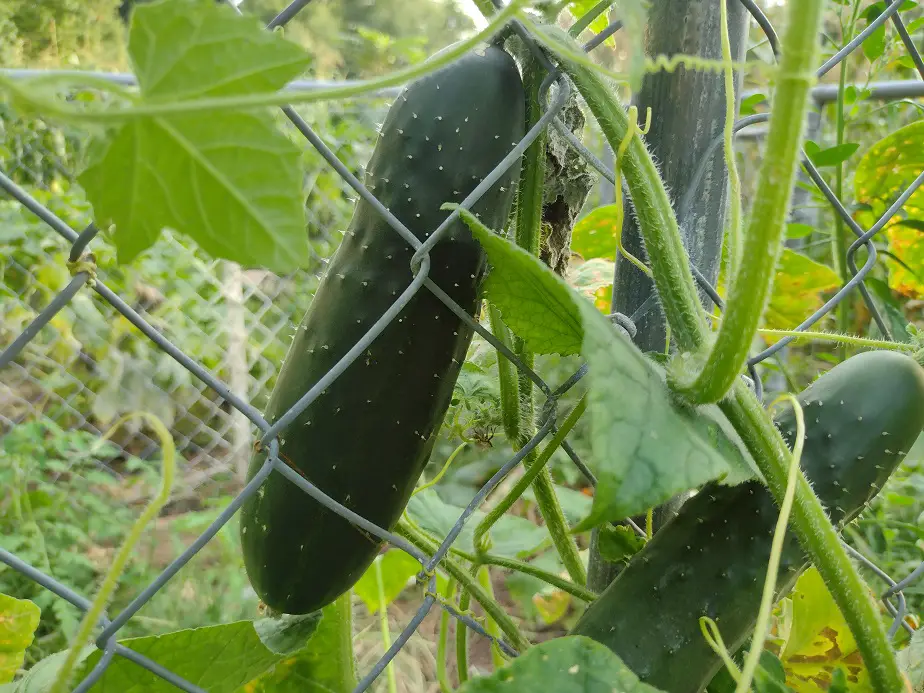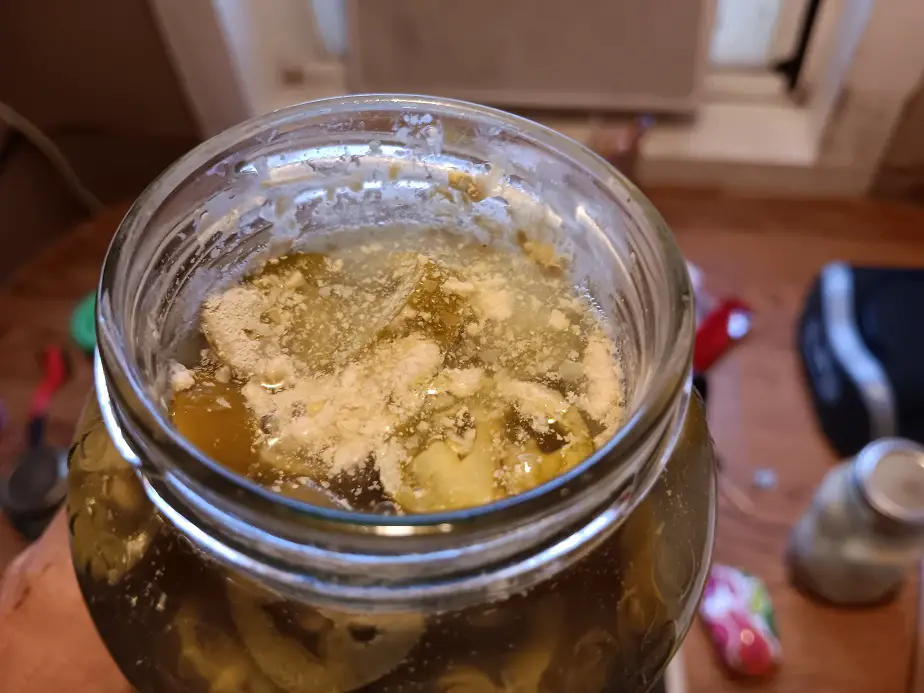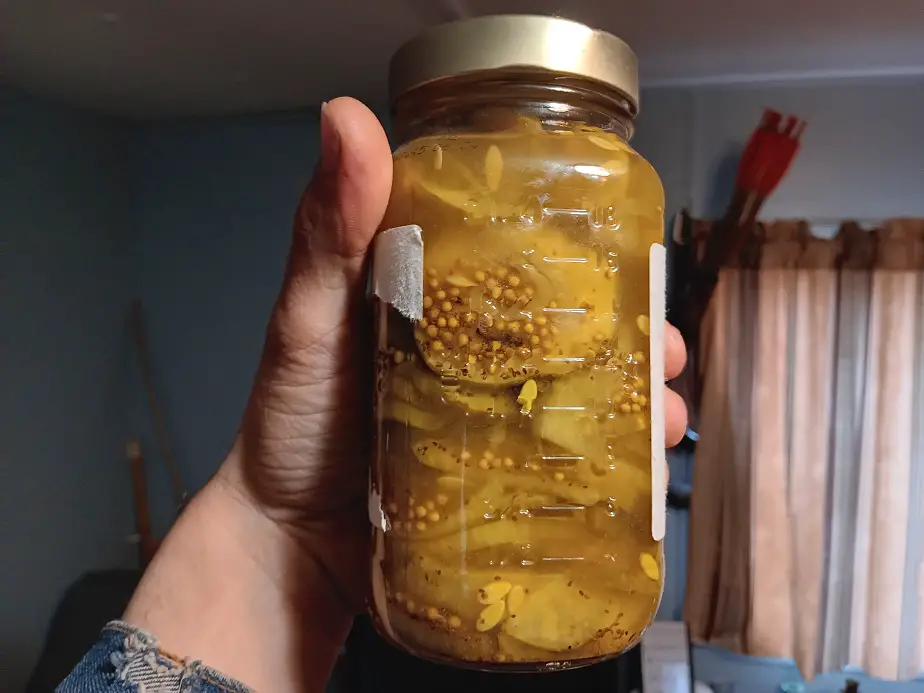I love eating homemade pickles and we put up a lot. We use a few different pickling techniques.
Homemade pickles may need canning or refrigeration to prevent spoilage. It’s recommended and common practice to can homemade pickles in the US to make them shelf-stable. The heating process of canning works to pasteurize the pickles, adding an extra margin of safety against potential spoilage.
A lot of home canners get quite nervous about open-air pickles, or pickles that weren’t sealed by canning. Really, it all depends on just what you are doing. Let’s talk about it.
When do Homemade Pickles Need to be Canned?
Homemade pickles need to be canned when the pH is above 3.8 and they are not refrigerated or fermented. The solution pH of the pickles usually determines whether or not they need to be canned. It’s a general fail-safe practice to can all pickles, but it’s not always needed.
unrefrigerated, un-canned pickles with a pH between 3.5 and 3.8 should be consumed within a few weeks of being
Before i get deeper, I want to say that there are numerous and differing “safe standards” of making and storing pickles. Generally in the US, we default to the USDA guidelines and recommendations. But, other organizations and other countries have different or simpler recommended guidelines for storing pickled foods.
The USDA guidelines are the strictest, most foolproof, and more than double up on all safety margins. People in European countries often think that the USDA standards are too safetied up and not at all practical. Now, let’s get into things.
Generally, finished pickles with a pH lower than 3.8 are considered safe to leave out on the counter or in the cupboard with a lid on them. Over time, they could spoil depending on pH and how much salt is in the brine. I consider an open can of uncooked pickles to good on the counter for two or three weeks.
The primary concern of them is that the vegetables can slowly begin to ferment or potentially spoil. Now, it’s uncommon but it’s possible, depending on the acidity and saltiness of the brine.
I have made pickles in jars and canned them. I have made them in jars and not can them, and have just made a crock pf pickles and let them sit on the counter.
Pickles can be done in four ways.
- Fermented
- Fermented pasteurized
- Vinegared
- Vinegared pasteurized
Generally, the canning process is used for the pasteurization as a failsafe.
Fermenting is a process of creating natural bacterial-produced lactic acid to lower the pH to a more shelf-stable point. Usually, fermented pickles reach a pH between 4.3 and 4.0, which is near the shelf-stable point.
Vinegared pickles use a vinegar/water solution to create a brine with enough acidity to prevent spoilage. Most vinegared pickles are between 3.3 and 3.8 pH. Much lower than that gets too acidic to enjoy.

When do Homemade Pickles not Need to be Canned?
With a pH of 4.6 or lower, the common food-poisoning bacteria cannot reproduce. Some strains of Lysteria have been documented to reproduce in as low as low as 3.9 pH in laboratory settings.
While recommendations for both vinegar and fermented pickles call for either water-bath canning or refrigeration, many kitchens have unheated pickles in the pantry.
Traditionally, vinegared pickles were packed in a stout brine of half water/half vinegar, and left in a barrel with a weight keeping them all below the brine. That way, they will acidify before beginning to spoil. Pickles like that were usually put up in the summer or fall and stored for a winter food.
If you use a low-strength brine and keep things in a warm place, they are likely to spoil in a few weeks.
I have 21 jars of vinegar cucumbers and jalapenos in my pantry from 14 months ago. Two of them look to be off. There’s a white, scummy layer on top. That’s kham yeast. Sometimes it just looks like kittel white particles floating on top. Yeast is one of the few things that can grow a bit in pickle brine. Kahm yeast isn’t harmful, but it looks bad.
Of these jars of pickles, ironically, the ones that went bad were originally filled with boiling brine. It happens sometimes. Some were packed in boiling brine, some were never heated. The solution pH of all my pickles here ranges from 3.5 to 3.2, I tested them yesterday for this article.
I have never seen one go bad in less than 4 months when the solution after curing the vegetable has a 3.6 or lower pH. So, for us, we only can what will be stored for at least that or longer. Generally, we eat out stored produce sooner than 4 months.
Now, when you add heat, you break down some of the acidity from vinegar. Pre-cooking the brine, as a lot of recipes call for, can be overdone and reduce the acidity because the acetic acid evaporates faster than water. When you boil or simmer a brine, get it up to temperature but don’t keep it there for a long time

Do Fermented Pickles Need to be Canned?
Fermented pickles are usually caned, but many traditional methods don’t require canning. They are preserved through fermentation acid and by active cultures of healthy yeast and bacteria. Fermentation is a functional preservative, but it may not be adequate at times.
I consider fermentation alone to be a low-key preservative and not enough on its own. Fermented pickles use the addition of salt. proper amounts of salt keep out most types of harmful bacteria and allow the growth of beneficial bacteria, primarily lactobacillus. That creates a very improbable environment for food poisoning to form.
Sometimes additional salt is added as a preservative aid. A fairly salty solution (more than 5% salt) prevents a lot of harmful bacteria.
Active fermented pickles are good for short-term or mid-term storage when properly made. Personally, I acidify our ferments with vinegar to bring the pH down to 3.5, or a bit lower. That stops the fermentation right at the point where I want it, and it makes the pickle more shelf-stable.


